
Fw 190 V-18
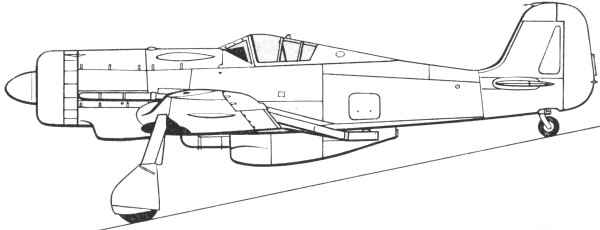
The Focke-Wulf 190 V-18 was one of five aircraft that were built as prototypes ( V18, V29, V30, V32 and V33)
for the Fw 190C version which was to be a high altitude fighter with an
exhaust driven super charger and a pressurized cockpit. All were
powered by DB 603G engines driving four bladed Schwarz wooded
propellers, and all had turbo superchargers in distinctive ventral
housings which resulted in them being known as Kanguruhs (kangaroos).
Problems with the superchargers plagued the project, most often failure
of the pipes carrying the exhaust gases to withstand the extremely high
temperatures. Eventually it was decided that the superchargers needed
much more development before they would be reliable for service use and
the 190C was removed from the RLM's list of potential service aircraft,
although work on the superchargers continued.
The Kit
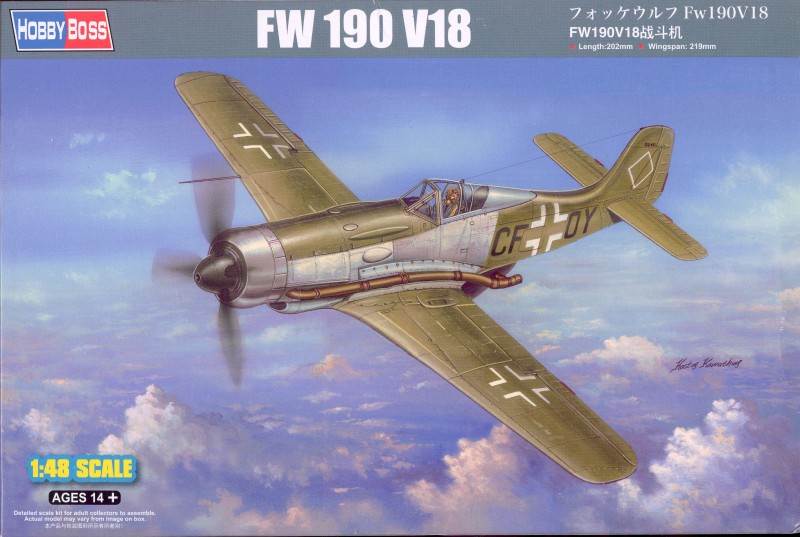
From a detail stand point the cockpit is OK for the scale and what little you will be able to see through the canopy opening. You get rudder pedals, seat and frame, joystick and instrument panel. The instrument panel in two parts, upper and lower, has raised dial bezels with no instrument detail and decals are supplied for these. Since the raised detail is a bit soft the decals should work well. The side consoles have detail molded in, again a bit soft so painting them will require care. Oddly there is no head rest provided. You don't get a complete engine but the rear of the engine section has been modeled as you will be able to see some it through the openings in the wheel wells. The propeller is a one piece part with separate spinner and back plate. The wheel well is a separate part with nice detail and as mentioned above has openings to the rear of the engine area. The landing gear look nice and the gear doors have nicely molded inside detail. The canopy can be displayed opened or closed. Lets look at the parts...
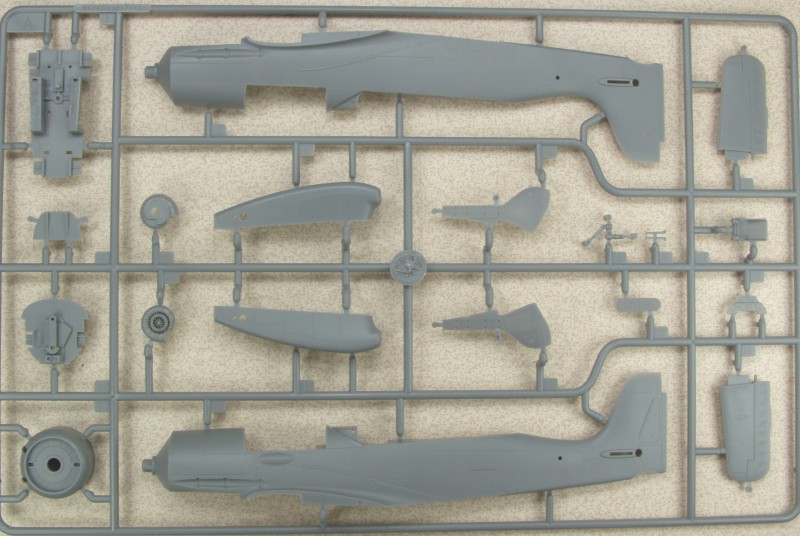
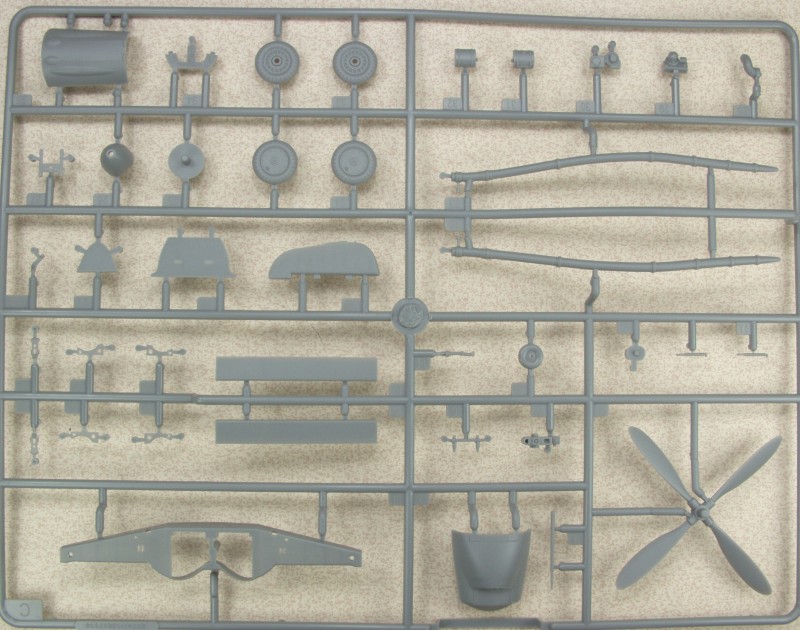
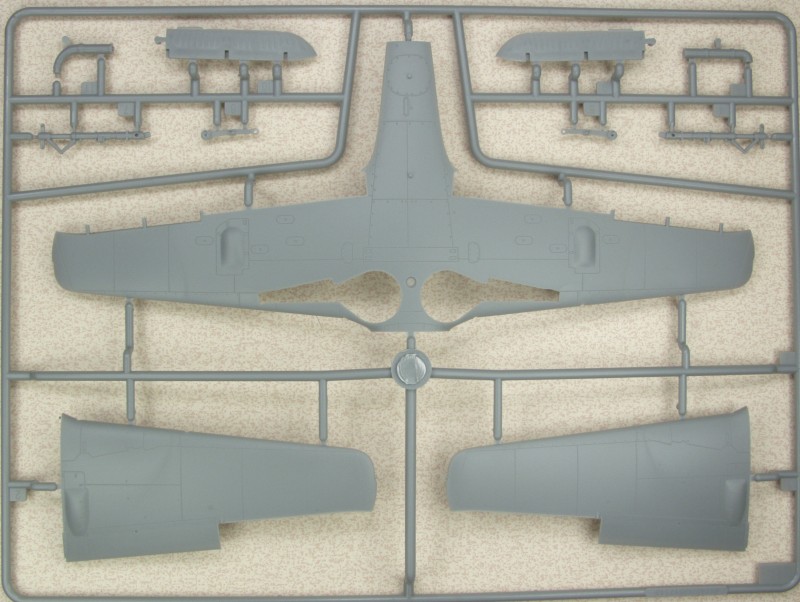
The clear parts are nice and clear with well defined frame lines. The aircraft was to have a pressurized cockpit so I guessing that is why it has more structural members than the standard 190 canopy.
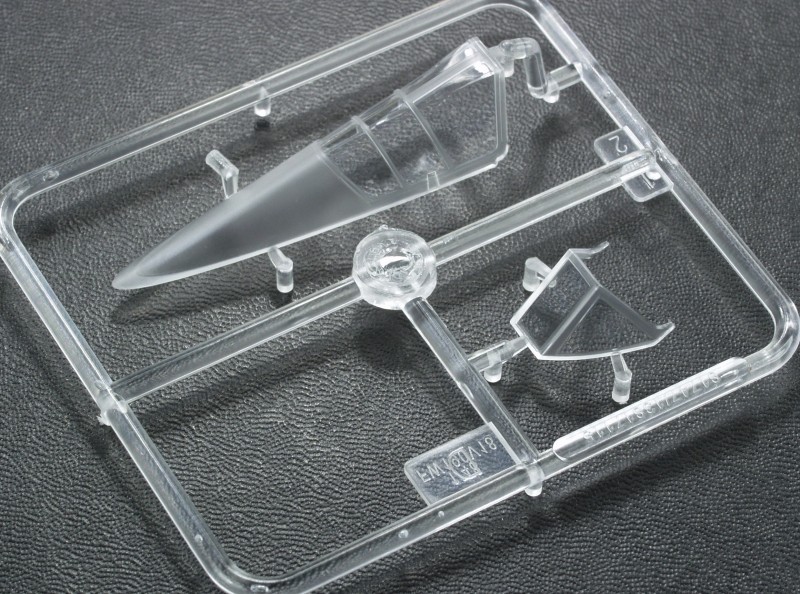
The decals are thin and glossy but have a lot of excess film, especially the combined national markings and radio call letters. Some stencils are provided and most are read able. The swastikas are the multi part type. Since this was a prototype only one aircraft is included on the sheet.
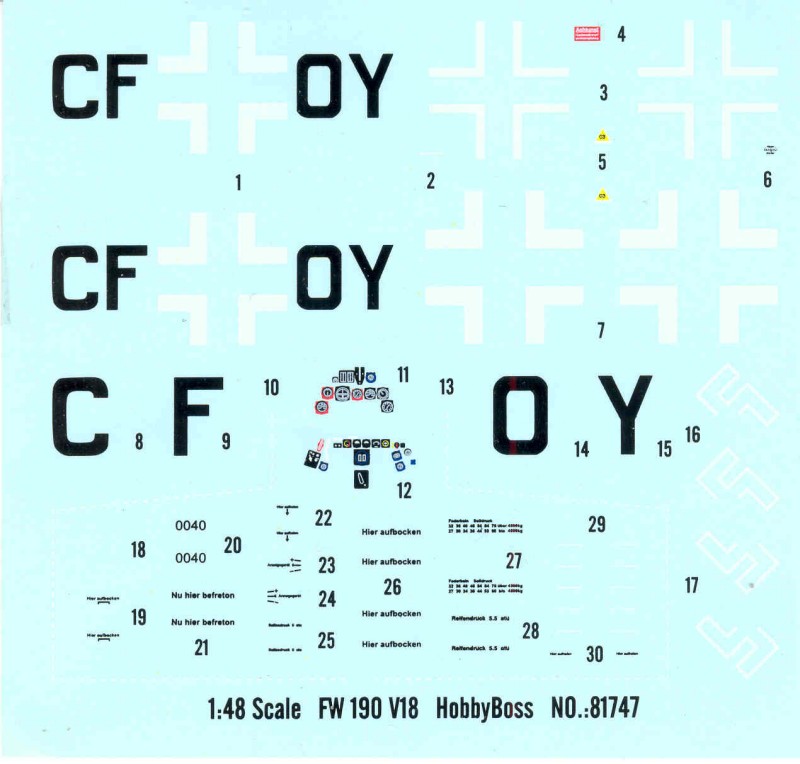
The instructions are an eight page A4 size in portrait and stapled at the spine. The front page has basic instructions and an icon map, second page a parts map and the balance of the pages are assembly diagrams in 15 steps. Color call outs are Gunze numbers. There is a second sheet, legal size on glossy paper in color with the painting and marking instructions. The diagram shows the aircraft in over all RLM2 except for some bare metal areas. Apparently some sources show some patches of a darker color on the upper wings and horizontal tail.
After Market Goodies
I wouldn't hold my breath here, sort of a limited interest kit but one never knows. I'd like to see at least an Eduard Zoom set but so far no joy.
Conclusions
HobbyBoss has been all over the map when it comes to kits as far a accuracy goes. A Focke Wulf expert could probably find all sorts of issues with it but to me it's a nice easily built kit of an unusual variant that never went into production. If you read the review at the link below it notes a couple of accuracy issues, one easily fixed and one that most will be able to live with. Recommended for modelers of all skill levels.
Links to kit build or reviews
A nice Build/review here.
References
Warplanes of the Third Reich by William Green
The Build
Like most kits the build starts with the internal parts. The 190 has a very small cockpit opening so not a lot will be seen when closed up so I went mostly out of box. I used the supplied decals on both the upper and lower panels. They didn't line up all that well with the raised detail but it's hardly noticeable. I did add belts and harness to the seat and a throttle lever to the side console.
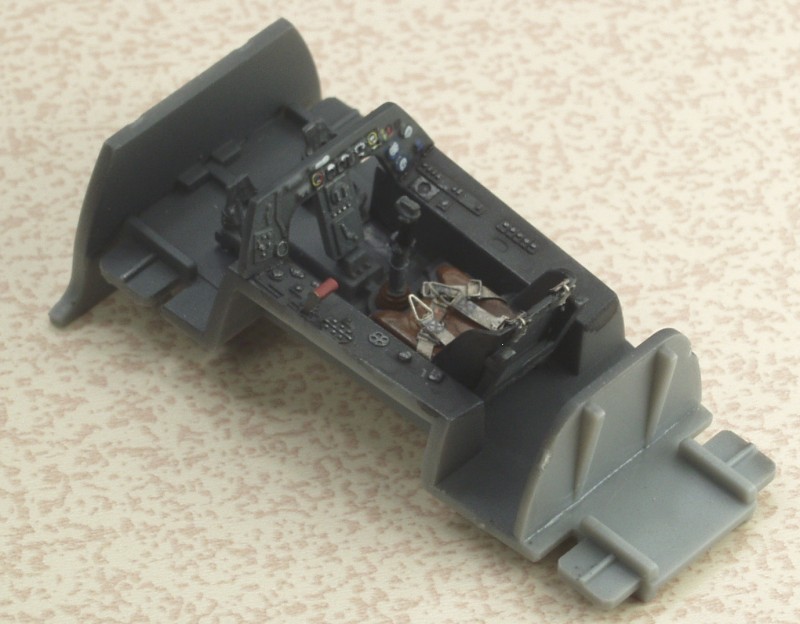
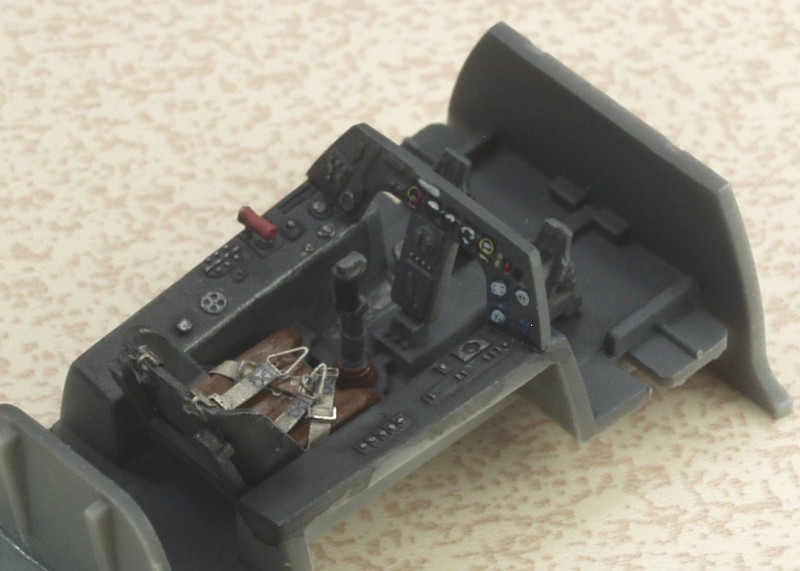
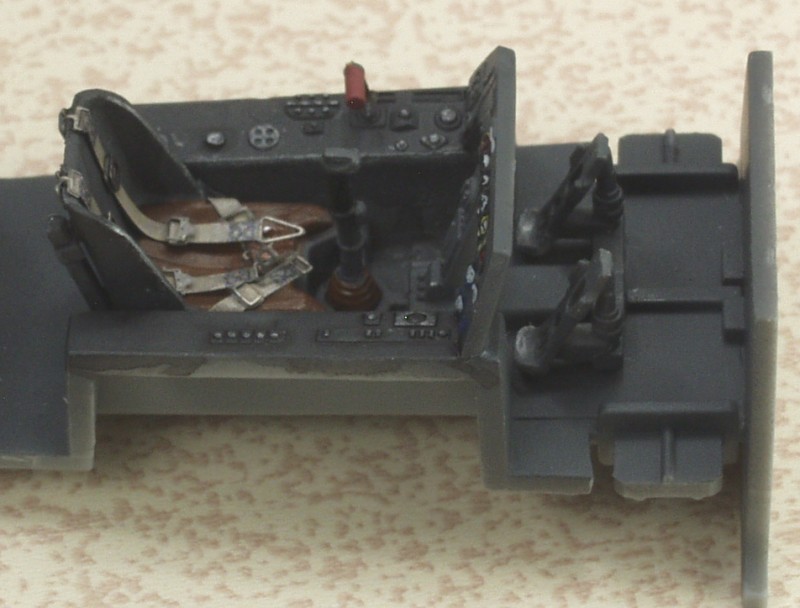
The main panel mounts to the fuselage below the cowl and will be hard to see. A PE panel would be wasted on this.
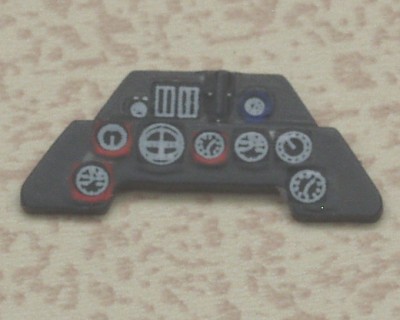
The kit includes an engine accessory section as it can be seen through the openings in the wheel wells. Probably could be more detailed with wires and hoses but it also will be difficult to see once assembled. The rather large piping is the duct work from the supercharger.
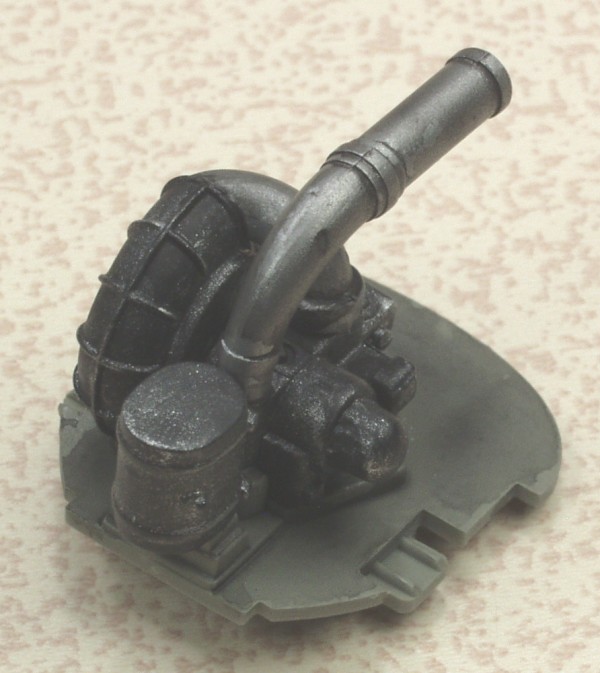
The V18 was not armed and though they got it right on the box art, the supplied cowling has gun ports, these will be filled and sanded down. Same for the gun ports in the wings. The photos I could find do not show the bulges on the wings for the guns either but I decided it was too much work to remove them so just left them.
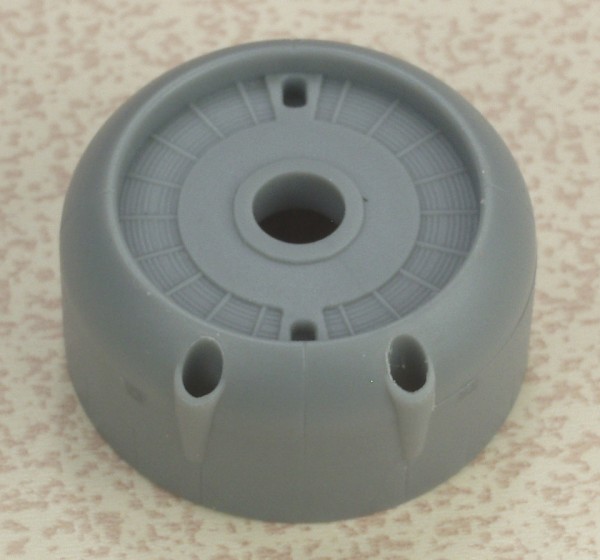
Overall the fit was very good and I only needed to use a hint of filler, shown below it is ready for a coat of primer. The cowling is just pressed in place and will be removed for ease of painting.
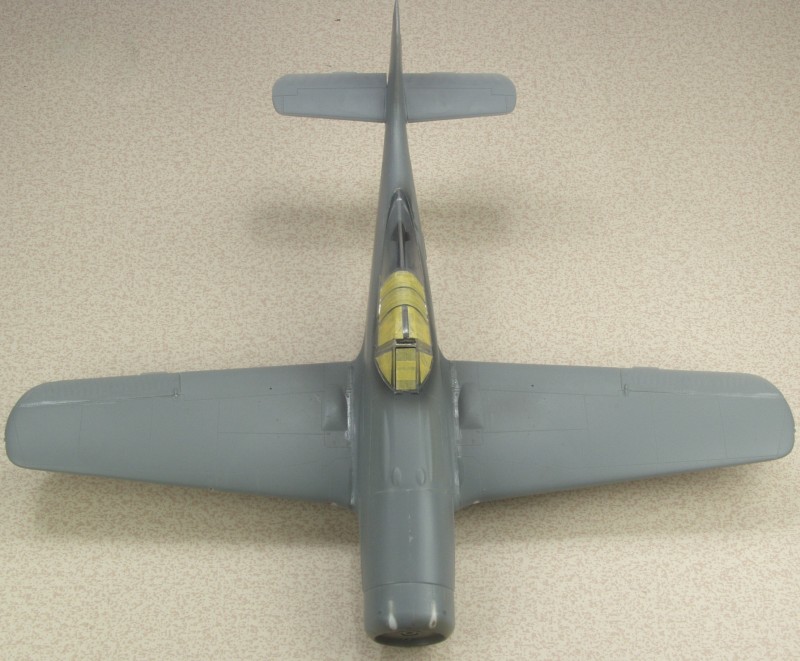
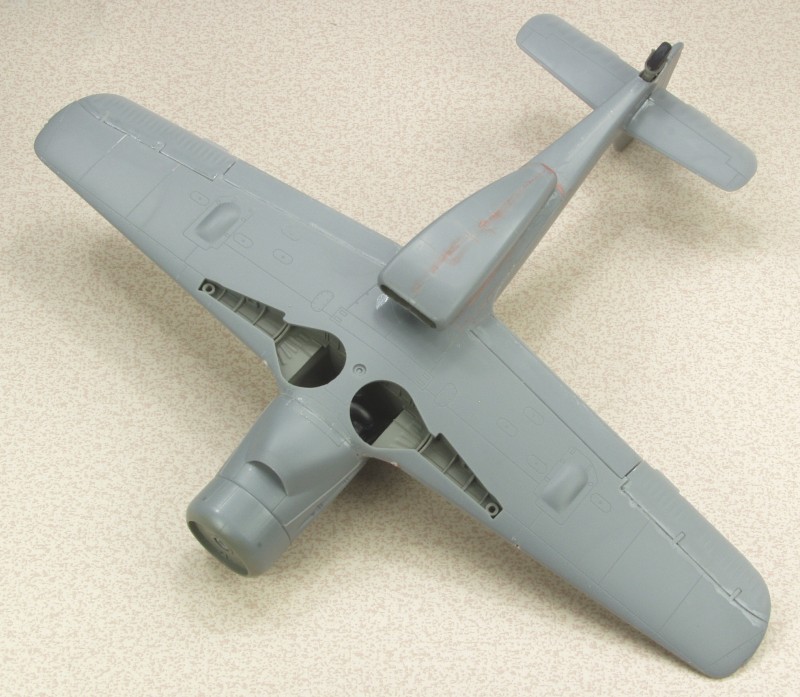
Now in primer.
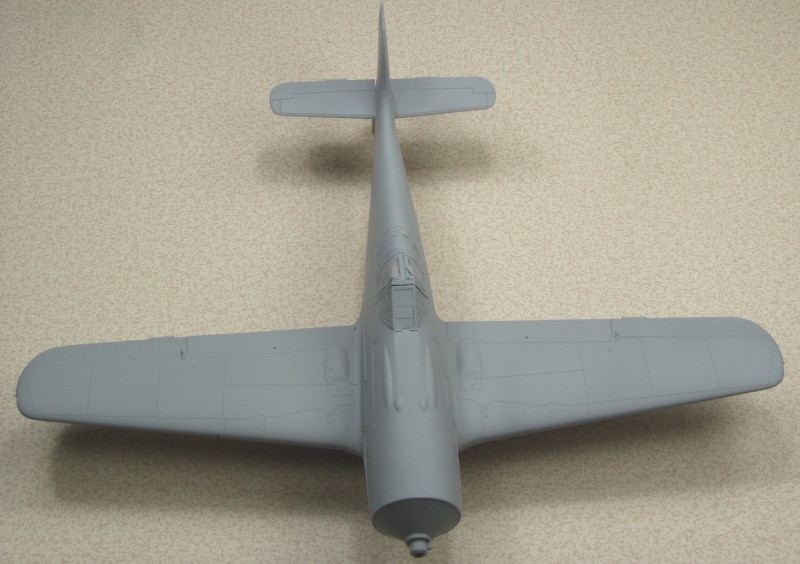
The gear doors fit snug enough I just pressed them in place to mask the wheel wells.
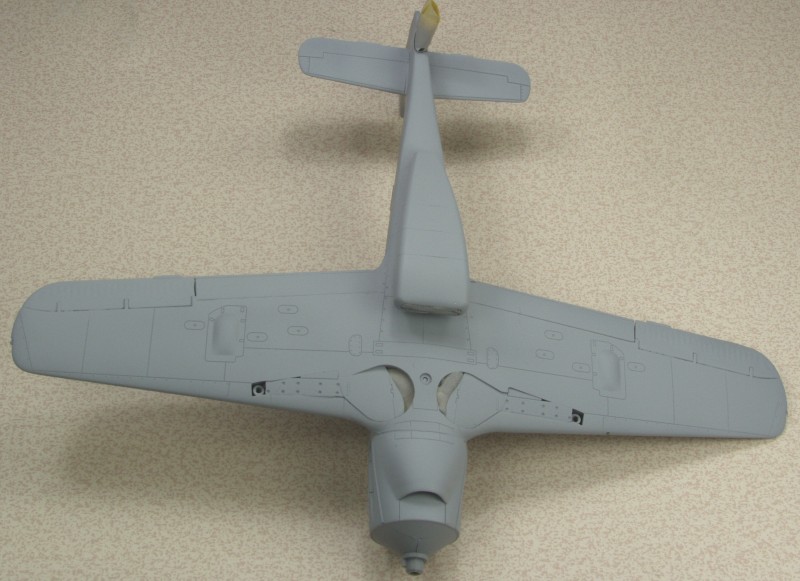
And done. All the marking except that swastika and werk number were painted on. I seem to always have silvering issues with the late war crosses and the kit decals had a lot of extra film on the code letters. The kit swastika was a multi part affair so I used one from an after market sheet I had. The work number was the only kit decal I used on the outside and it seemed to take an eternity to loosen up on the backing sheet but settled down OK. I used three different shades of alclad. the cowling and lower nose are aluminum, the area around the cockpit is dark aluminum and the cladding used to protect the airframe from the hot exhaust was steel. The cowling was buffed using some Hawkeye's aluminum polishing powder.
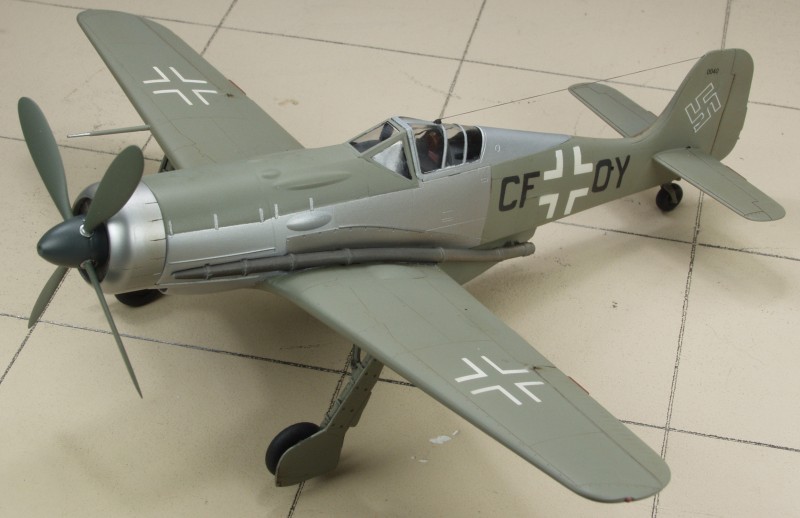
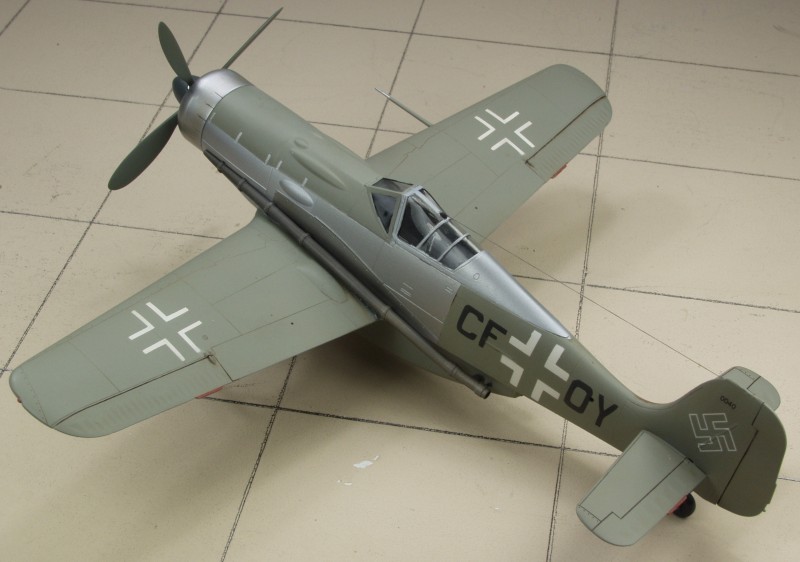
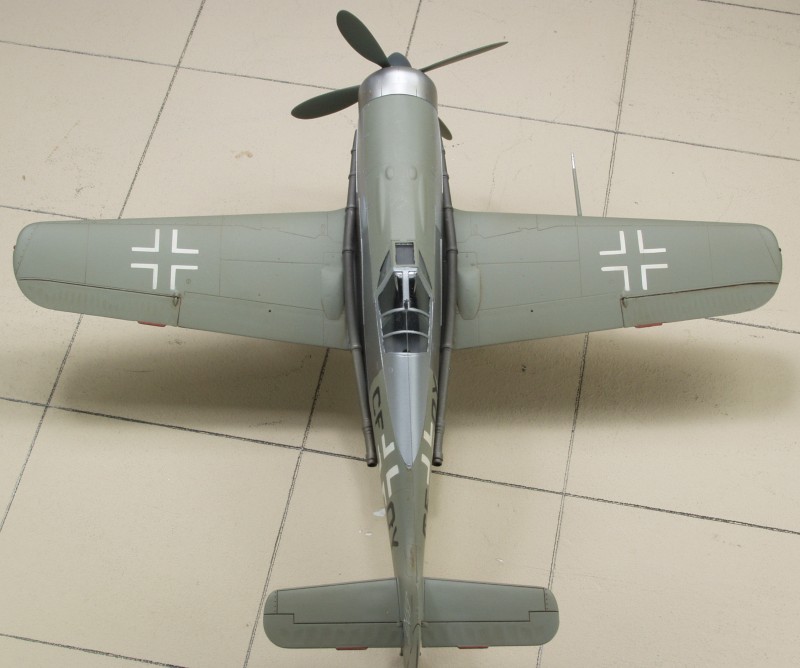
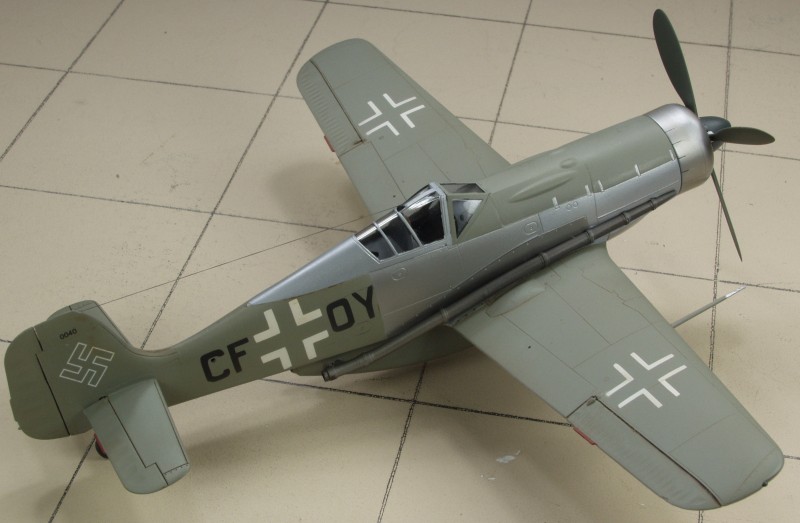
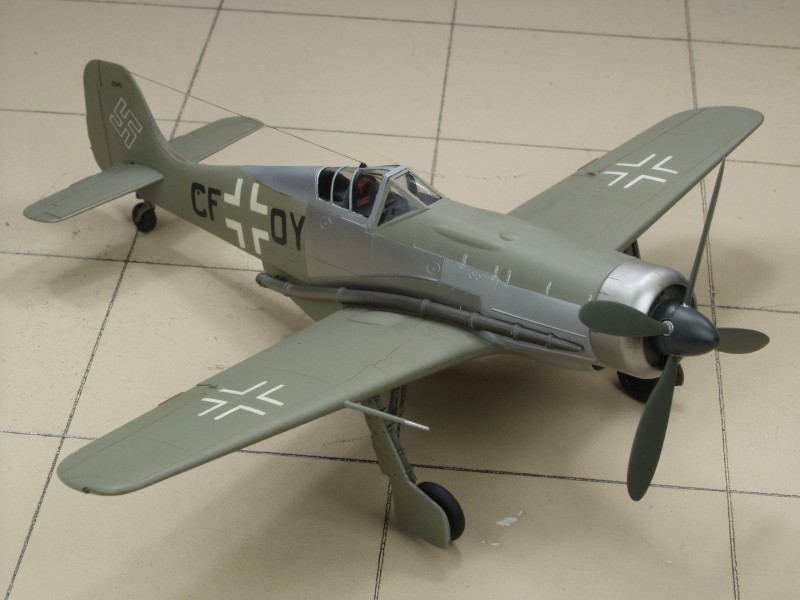
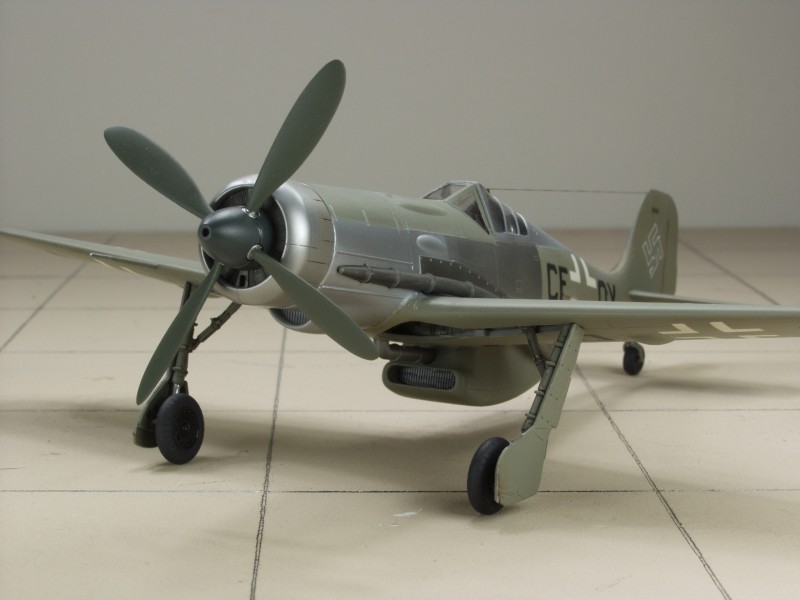
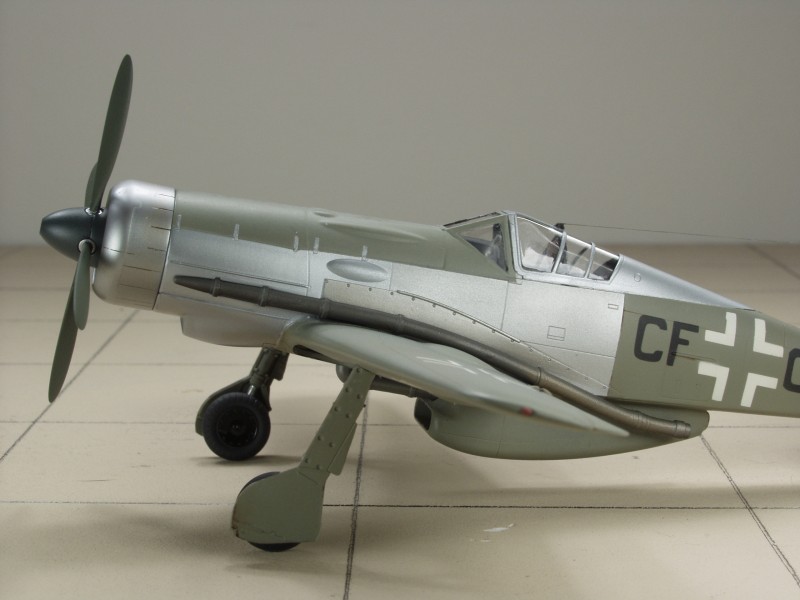
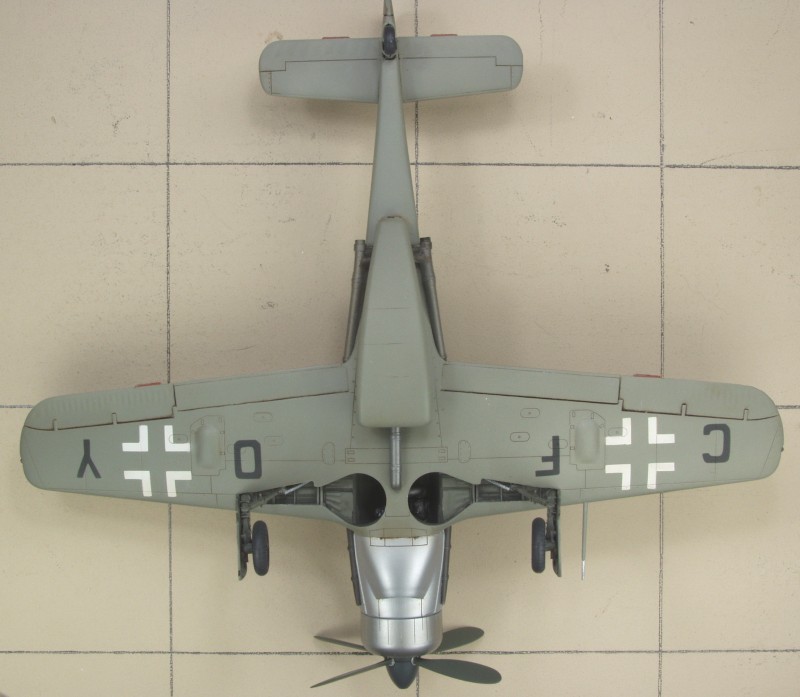
This was a nice easy build of an unusual aircraft. The fit of the parts was very good.